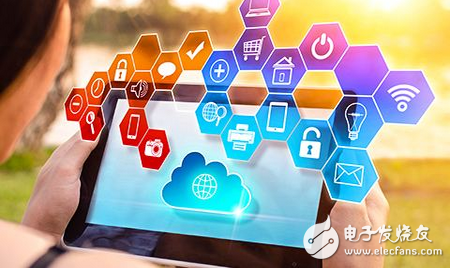General: 5G supports the Internet of Things, the Internet of Things is the most important application scenario of 5G
5G and the Internet of Things are important development directions for the communication industry in the next 10 years. The two have an inseparable relationship: in order to fully realize the landing of the Internet of Things, 5G needs network support; at the same time, consider the completeness of 5G network construction and For the adequacy of access, the Internet of Things will become the most important application scenario for 5G. Therefore, this report will elaborate on the relationship and synergy between the Internet of Things and 5G, and make a complete and complete combing of the Internet of Things industry.

The Internet of Things industry is developing rapidly. The overall scale will exceed 1.8 trillion yuan in 2020.
From the perspective of industrial development, the Internet of Things has successfully passed the industrial introduction period and entered the rapid growth period. It has certain technical reserves in the sensor layer, network layer and application layer, and in some areas such as the global rear-loading tracking module. The volume has reached tens of millions. With the construction of next-generation communication standards, the industry will see explosive growth.
From the perspective of demand and market space, with the improvement of industry standards, technological progress and policy support, China's Internet of Things industry space has gradually opened. According to the Ministry of Industry and Information Technology, the industry scale reached RMB 750 billion in 2015, a year-on-year increase of 29.3%. By 2020, the overall size of the Internet of Things in China will exceed 1.8 trillion yuan.
Three core development directions support the expansion of the Internet of Things
One of the core directions: NB-IoT and LoRa promote the development of low-power wide-area IoT market. NB-IoT and LoRa are suitable for networking in authorized and unlicensed frequency bands respectively, and will become the core networking standard in the low-speed field of the Internet of Things in the future. At present, the three major operators have started NB-IoT network construction, and LoRa's domestic operation alliance has also begun to form, which has become one of the most certain development trends in the field of Internet of Things. Sub-sectors such as smart meters will benefit.
The second core direction: the Internet of Vehicles is an important reference for testing the progress of the Internet of Things. The Internet of Vehicles is not a new concept, but the biggest factor in the development is the algorithm and the hardware and network that carries the algorithm. We believe that LTE-V and next-generation communication standards will solve network problems on a large scale and become an important reference for testing the progress of the Internet of Things.
The third core direction: the smart city accommodates a large number of market segments, and promotes the niche. The essence of a smart city is to make the traditional city run "Internet of Things", which is broader than the former two concepts, but we think it is indeed an important component of the Internet of Things architecture. From the perspective of the industries and companies we cover, smart transportation, electronic license plates, safe cities, smart healthcare, smart communities and smart buildings all bring blue oceans to traditional industries. We believe that smart cities will bring new opportunities to these long-tailed market segments and create new niches.
IoT industry chain and listed companies are thoroughly combed
The IoT architecture can be divided into a perception layer, a network layer, and an application layer. From the perspective of the scale of the industry chain, the application layer and the platform layer have the largest value. From the perspective of industrial development, the Internet of Things will extend from the sensing layer and the network layer to the application layer. Chips, sensors, and operational networks will benefit first, but ultimately it will be the killer-level application as the entry point and final value realization.
The sensing layer is the source of the Internet of Things to identify objects and collect information. MEMS, MCU and electronic tags are several sub-areas with more certain growth in the future; the long-distance wireless WAN in the connection layer has huge growth space; the platform layer is the IoT industry chain. At the key points, cloud computing and big data technology are the key technologies at the platform level; the application layer is the core of the development of the Internet of Things, and the short-term optimistic about low-power, low-cost application scenarios or large enterprises, the government's huge financial and material-driven industries, medium-term Optimistic about the Internet of Vehicles and the driverless industry chain, long-term optimistic about the industrial changes brought about by the Industrial Internet of Things, detailed reference to the official reference to the formal report.
Usb Cable,Otg Usb Cable,Usb Micro B Cable,Micro Usb Cable
Dongguan Swan Electronic Technology Co., Ltd , https://www.swanconnector.com